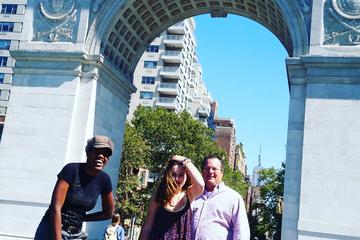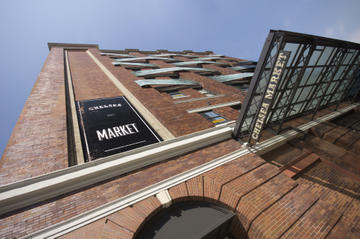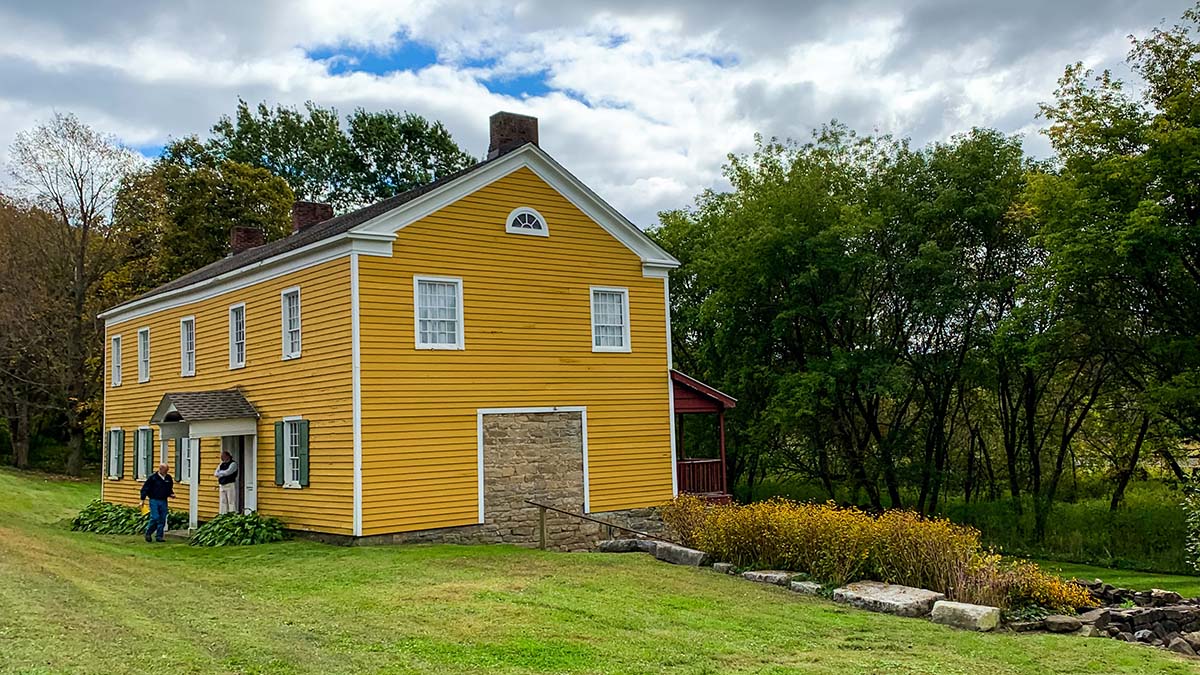
by Lisa Evans
“There is nothing new in the world except the history you do not know.”
– Harry S. Truman
St. Johnsville, New York is ripe with Colonial history. It is a charming, quaint village located just a bit over an hour west of Albany and situated along the Mohawk River. Growing up here, I was surrounded by history and places that my youthful mind never appreciated nor found necessary to explore outside classes in high school. Within 15 minutes of my childhood home stands places so steeped in history that all are listed on the National Register of Historical Places.
Fort Klock is likely the most well-known of these places. This homestead, still intact and standing, was built in 1750 by Johannes Klock. Fort Klock played a prominent role in the Revolutionary war, with its owners taking part in the Battle of Oriskany and the bloody encounter known as the Battle of Klock’s Field. While Fort Klock is an amazing place to visit, today I would like to focus on lesser known gems in the Mohawk Valley.
Together, lets sojourn back to these places a few hundred years ago, back to Colonial America, back to Europe in the 18th century, and learn of the people who emigrated to the American colonies in search of freedom and a better life. Let’s learn of the ones who were already here, and the places they built which miraculously are still standing today – over 250 years later.

 Indian Castle Church
Indian Castle Church
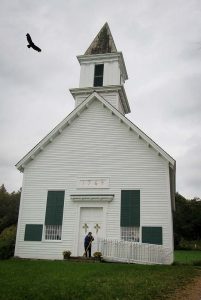 This quaint, beautiful church is located not far from either Little Falls, in Herkimer County or St. Johnsville in Montgomery County. It is quite simply a lovely country church built in 1769 by Sir William Johnson.
This quaint, beautiful church is located not far from either Little Falls, in Herkimer County or St. Johnsville in Montgomery County. It is quite simply a lovely country church built in 1769 by Sir William Johnson.
Sir William was an honorary member of the Society for the Propagation of the Gospel and the British Superintendent of Indian Affairs in the Colonies. It was built as a mission church to teach Christianity to the Mohawk Nation, one of the Five Nations of the Iroquois League. The land the church is built on was donated by Molly and Joseph Brant, two prominent siblings of the Mohawks of the time. Molly was also Sir William’s companion for many years, having been mother to several of his children. Her brother Joseph became a Mohawk leader and war chief.
Today, it is the only Indian mission church still surviving in New York State and is owned by the Indian Castle Church Preservation Society. The church itself is very simple and lovely. In historical records, it is listed only that as “a wooden church, 50-foot-long by 32 wide.” Its dedication service was in June of 1770. Unfortunately, it never truly acquired a permanent catechist to live among the Mohawks, but there were frequent services performed by neighboring missionaries.
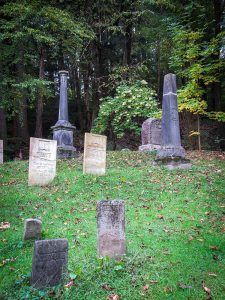 After the British were defeated in the Revolutionary War, the building stood vacant for quite some time. By 1855, the church was in desperate need of renovation and a separate group of churches formed an accord to rebuild Indian Castle Church. Originally, it had been built facing East-West. During the renovation, it was moved on a 90-degree angle, so the entrance now faced North-South. There were many changes made to the structure but today it still holds the original super-structure and a small window in the south attic wall. The roof still possesses its 18th century steep pitch.
After the British were defeated in the Revolutionary War, the building stood vacant for quite some time. By 1855, the church was in desperate need of renovation and a separate group of churches formed an accord to rebuild Indian Castle Church. Originally, it had been built facing East-West. During the renovation, it was moved on a 90-degree angle, so the entrance now faced North-South. There were many changes made to the structure but today it still holds the original super-structure and a small window in the south attic wall. The roof still possesses its 18th century steep pitch.
Behind the church lies a cemetery and burial grounds which has original headstones and remains of both Mohawks and Europeans. It is an eerily beautiful spot, looking down on the Church from the hill above. A peaceful resting place for its residents, some dating back centuries.
Old Palatine Church
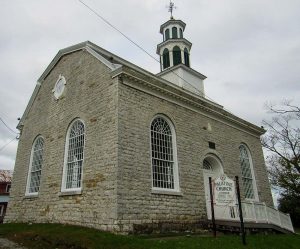 This enchantingly humble church is located on State Route 5, between Nelliston and St. Johnsville.
This enchantingly humble church is located on State Route 5, between Nelliston and St. Johnsville.
In the early 1700s, many Palatine Germans left their home along the Rhine Valley in southwest Germany in search of economic, religious and social freedom. They first ventured to England. The Crown saw them as a means to settle Colonial America, in the Colony of New York, on the frontier to help England hold the land from the Indians and the French. Many settled in the Schoharie Valley, and many moved to the Mohawk Valley. These pioneers played a significant role in making America. They fought and died at the battles of Oriskany and Saratoga.
One such prominent family was the Nellis family. There were several branches – some were loyalists to the Crown while others were colonial settlers, intent on making a better life. The Nellis family was one of four who provided the necessary funding to build the Old Palatine Church in 1770, making it one of the oldest churches in the Mohawk Valley. It has massive stone walls, made from the limestone taken from a nearby creek. It still has the gilded bronze rooster on top of the spire, donated by the Nellis family.
During the American Revolution, there were devastating raids across the Schoharie and Mohawk Valley. The British were burning all the farms, trying to force the colonists to retreat and leave the fertile farmland along the Mohawk River to the British. It was to be resettled once they won the war. One such raid took place in 1780 not far from the church. While all the other farms on the road were ravaged, Old Palatine Church was not harmed. It is said the British officer stopped there because he had made a promise to his friend Henry Nellis not to harm the church his family had built.
In 1938, the Palatine Society of the Evangelical Lutheran Church Inc. took possession of the deed with the purpose of maintaining the integrity of the history of the Church and ensuring it would always be used as a place of worship.
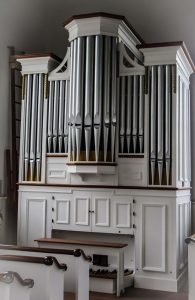 Through the years, the building fell into disrepair and with the generosity of local families, restoration of the Church was made possible. Inside your will find books and other items of historical significance, housed in glass cases to preserve them. The open rafters in the ceiling, the pulpit and sparkling windows allow one to feel the magic of the building. Possibly the clearest statement of this house of worship – besides the history that has seeped into its walls – is the pipe organ.
Through the years, the building fell into disrepair and with the generosity of local families, restoration of the Church was made possible. Inside your will find books and other items of historical significance, housed in glass cases to preserve them. The open rafters in the ceiling, the pulpit and sparkling windows allow one to feel the magic of the building. Possibly the clearest statement of this house of worship – besides the history that has seeped into its walls – is the pipe organ.
This magnificent pipe organ was built in 1978 by Robert S. Rowland, in the fashion of organs built by David Tannenberg of the Moravian church. Mr. Tannenberg was the first notable organ builder in the 1700s. The organ was designed to match the interior of the church. It was the last organ done by Mr. Rowland in his long career, being built in Ossining, NY and transported and assembled inside Old Palatine Church.
The church was placed on the National Register of Historical places in 1973, and today still holds limited worship services and special events.
1747 Nellis Tavern
Located just east of the village of St. Johnsville, on State Route 5, you will find Nellis Tavern (photo at top). Another branch from the large Nellis family was Christian Nellis Sr., who moved into the Mohawk Valley in 1722. In 1725, he obtained land and built a homestead along with Fort Nellis near the Mohawk River. By 1747, the Nellis Tavern was born – during the 18th century, travelers were not turned away. With that in mind, and with the tavern’s proximity to the Mohawk River, many travelers docked along the river and sought food and drink at the tavern. As my guide stated, it was rather like a “Bed and Breakfast with Booze.”
By 1767, Christian Sr. had deeded the property to Christian Jr., and the tavern tradition carried on. Not too many years beyond that, the Revolutionary War came to the area and with it came a situation much like that of the Civil War almost a century later. While perhaps not considered at the time, the war pitted family members against family members – splitting them apart. Some fought for the Crown and some fought for the Colonies. The Nellis family was not immune to this trend. Much of the Mohawk Valley was burned, but some buildings remained standing. Perhaps, as in the case of the Old Palatine Church, the Nellis family Loyalist connections saved the 1747 Nellis Tavern.
The building remained a tavern through the mid-1800s. Prior to the Civil War it reverted to being strictly a farmhouse and homestead. It was lived in by members of the Nellis family until the 1950s and then fell into grave disrepair. In the 1980s, the Palatine Settlement Society purchased the land and building, and renovations began and continue to this day.
The allure of the 1747 Nellis Tavern is not only in its history, but also in its architectural and artistic components. Once inside, you can follow the history of the building through all its phases – it is truly fascinating. There are so many nuances, it takes a true visit to appreciate it all, but a few that stood out are listed below.
The wattle and daub construction of the walls. This technique is used in timber framed houses – in between the scored upright stakes, the area is filled with wood, limbs, whatever is available mixed with mud, dirt or animal dung. Then plaster is placed over this. This type of construction affords great insulation for the home. Despite the renovations that have been done, when inside the home, you can see where the original buildings and walls were, where the second story was added, the different size doors in the center room, and the original staircase up to the second floor.
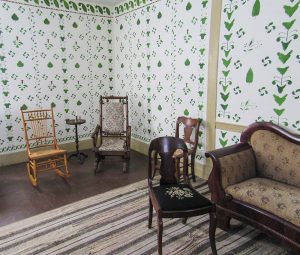 The artistic stenciling on the walls of the home is something that is truly incredible. During restoration, some wallpaper was removed to reveal underneath 19th century early American stencils. There are seventeen different patterns, including the thistle and tulip. Through a technical assistance grant, the Palatine Settlement Society was able to identically replicate the original stencils from the plaster walls on the newly installed sheetrock. When you see the intricate and beautiful stenciling, you are in awe of the work that goes into this type of art. In the first-floor parlor, there are still three separate stencil patterns, furthering evidence this was once three separate rooms.
The artistic stenciling on the walls of the home is something that is truly incredible. During restoration, some wallpaper was removed to reveal underneath 19th century early American stencils. There are seventeen different patterns, including the thistle and tulip. Through a technical assistance grant, the Palatine Settlement Society was able to identically replicate the original stencils from the plaster walls on the newly installed sheetrock. When you see the intricate and beautiful stenciling, you are in awe of the work that goes into this type of art. In the first-floor parlor, there are still three separate stencil patterns, furthering evidence this was once three separate rooms.
The house was ‘reoriented’, meaning originally the door to the home was facing the Mohawk River. In the early 19th century, the Mohawk Turnpike was established. As this now served as the means of travel for most, the back door was made the front and vice versa to ensure the travelers had full access to the tavern. This is also about the time the second story was built to accommodate more guests.
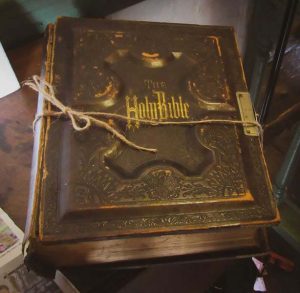 I would be remiss if I did not mention the late 19th century clasp Bible that is present. This was a Nellis family bible, from the William Nellis branch who had settled near Stone Arabia. It was captivating to see something so sacred to the family on display.
I would be remiss if I did not mention the late 19th century clasp Bible that is present. This was a Nellis family bible, from the William Nellis branch who had settled near Stone Arabia. It was captivating to see something so sacred to the family on display.
Lovers of times past already know the area in and around St. Johnsville, in the center of the Mohawk Valley, is filled with historical significance for those who choose to look and appreciate.
The next time you take a trip and want to explore some charming off-the-beaten-path places with monumental history at your fingertips, venture to the Mohawk Valley. From Albany, head west on the NYS Thruway (I-90) or Route 5. From Utica or Syracuse, head east. You will not be disappointed.
For More Information:
Indian Castle Church is located at 141 Dillenbeck Rd, Little Falls, NY 13365
Old Palatine Church is in Fort Plain, NY 13339
Nellis Tavern is located at 7355 St. Rte. 5, just east of St. Johnsville, NY 13452
About the author:
Lisa Evans is a freelance travel writer and photographer, currently based in Coastal Mississippi after having relocated from Central New York several years ago. Her love of travel and historical places with stories to tell, in addition to her admiration of beautiful, poignant photographs has ignited her desire to write stories and take photos that will instill a desire in her readers to explore the world and discover new places. With a background in tourism, sales and events, she has a unique perspective of the interests of many people. Lisa is a member of TravMedia and Travel Writer’s Cafe and has written for various publications. She maintains a website at WriterLisa.com as well as a social media presence on Instagram.
Photo credits:
All photographs are by Lisa Evans:
1. Nellis tavern
2. Indian Castle Church
3. Aged headstones in cemetery of Indian Castle church
4. Old Palatine Church
5. Palatine Church Pipe Organ
6. Nellis Tavern stove room
7. Nellis Tavern family Bible



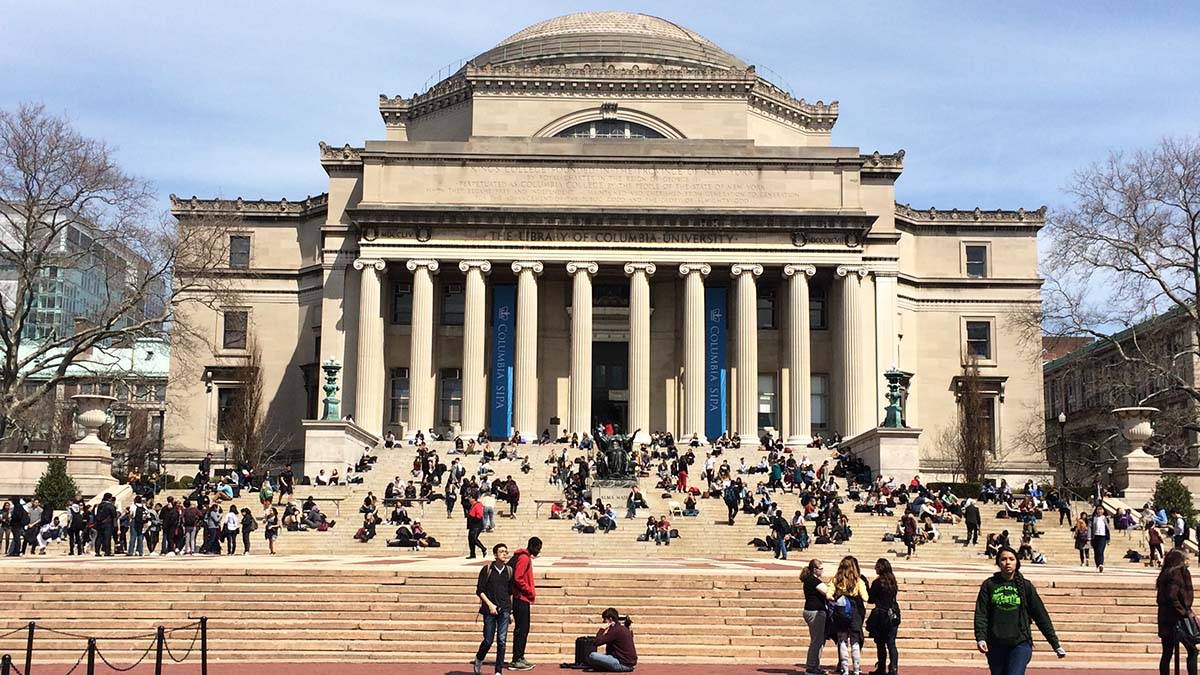
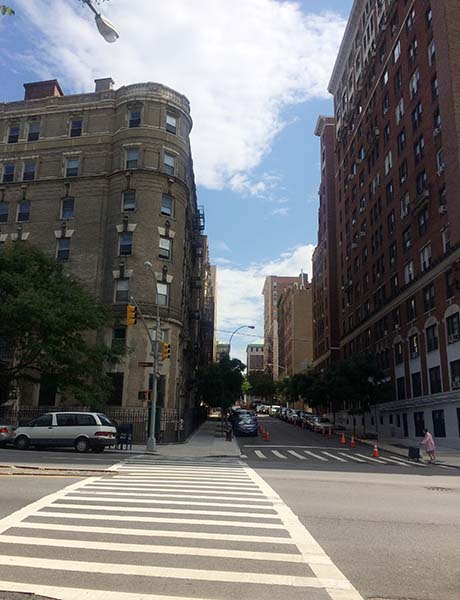 But then, just a few miles north of the bustling clamor of Times Square, one can enter a very different world of relative quietness and calm. This is the neighborhood known as Morningside Heights, home to several excellent educational institutions and also a few other points of interest. The area begins from 110th Street in the south, ends at 125th Street to the north and is bookended by the Riverside and Morningside parks.
But then, just a few miles north of the bustling clamor of Times Square, one can enter a very different world of relative quietness and calm. This is the neighborhood known as Morningside Heights, home to several excellent educational institutions and also a few other points of interest. The area begins from 110th Street in the south, ends at 125th Street to the north and is bookended by the Riverside and Morningside parks.
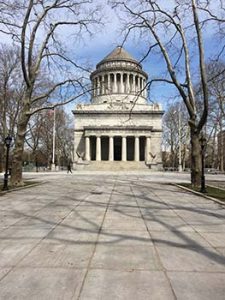
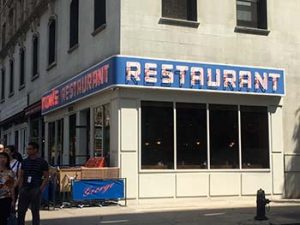


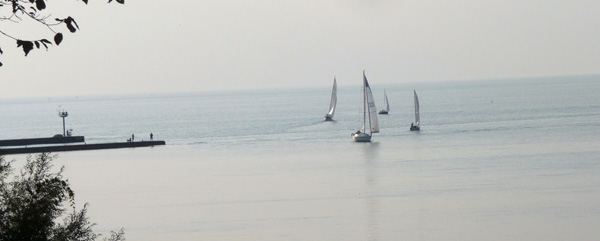
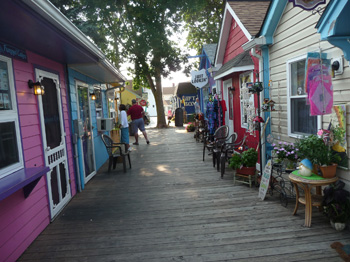 Back in the early 1900’s, Olcott Beach was a resort area. When a trolley line was put in place between the towns of Lockport and Olcott in 1900, summer visitors flocked to the beach to enjoy the cool breezes of Lake Ontario and entertainment. Also vacationers arrived by steamship. During the early years of the 1900’s, over 100,000 tourists arrived yearly.
Back in the early 1900’s, Olcott Beach was a resort area. When a trolley line was put in place between the towns of Lockport and Olcott in 1900, summer visitors flocked to the beach to enjoy the cool breezes of Lake Ontario and entertainment. Also vacationers arrived by steamship. During the early years of the 1900’s, over 100,000 tourists arrived yearly.
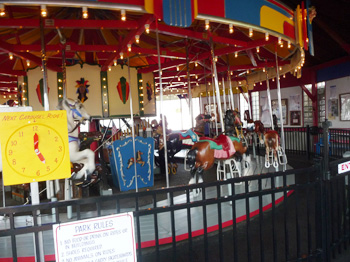 When we parked near the shops, we immediately heard the “oom-pa-pa” of a carousel’s Wurlizer Band organ. The Olcott Beach Carousel Park was developed in 2003-2004 by local volunteers who raised funds for building a vintage amusement park.. It features an old time Herschell-Spillman two-row carousel and a few other kiddie rides for only 25 cents a ride! They can do this because the park is staffed by volunteers and is incorporated as a nonprofit organization. When you enter this quaint park you feel like you are going back in time to around 1945.
When we parked near the shops, we immediately heard the “oom-pa-pa” of a carousel’s Wurlizer Band organ. The Olcott Beach Carousel Park was developed in 2003-2004 by local volunteers who raised funds for building a vintage amusement park.. It features an old time Herschell-Spillman two-row carousel and a few other kiddie rides for only 25 cents a ride! They can do this because the park is staffed by volunteers and is incorporated as a nonprofit organization. When you enter this quaint park you feel like you are going back in time to around 1945.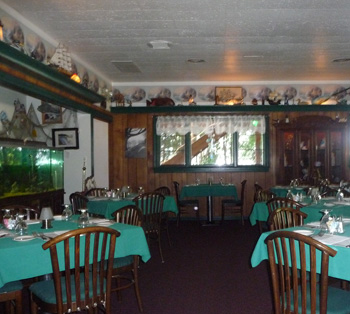 After a stroll through the mini-boardwalk and the park, we went around the corner to eat at the Mariner’s Landing restaurant. We chose to eat inside due to the heat that evening. But we could have eaten on an outdoor upper deck which offers a stunning view of Lake Ontario and nearby Krull Park. The inside was filled with nautical decor, especially on an upper ledge that ran all the way around the dining room. It was filled with models of ships, lighthouses, sea captains, and other knick-knacks. They were fascinating to look at.
After a stroll through the mini-boardwalk and the park, we went around the corner to eat at the Mariner’s Landing restaurant. We chose to eat inside due to the heat that evening. But we could have eaten on an outdoor upper deck which offers a stunning view of Lake Ontario and nearby Krull Park. The inside was filled with nautical decor, especially on an upper ledge that ran all the way around the dining room. It was filled with models of ships, lighthouses, sea captains, and other knick-knacks. They were fascinating to look at.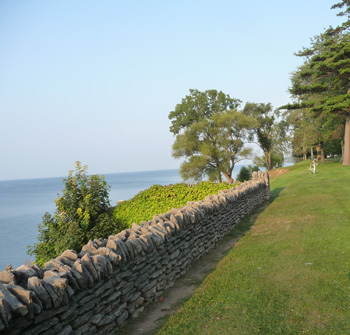 After our meal we needed to walk off some calories and wandered across the narrow street into the beautiful 325-acre Krull Park. The park overlooks the lake in the area where the old Grand Hotel once stood. We didn’t go down the steep stone step pathway to the beach below where the swimming area is, but enjoyed the view from above. The park is pleasantly arranged with benches, picnic areas, and pavilions. We heard that over the summer several festivals take place at the park. Across Main St. is another section of the park. In a drive-by, we could see busy recreation fields and courts that were full of kids playing sports, along with spectators. A cheerleading squad was practicing within sight of the street also.
After our meal we needed to walk off some calories and wandered across the narrow street into the beautiful 325-acre Krull Park. The park overlooks the lake in the area where the old Grand Hotel once stood. We didn’t go down the steep stone step pathway to the beach below where the swimming area is, but enjoyed the view from above. The park is pleasantly arranged with benches, picnic areas, and pavilions. We heard that over the summer several festivals take place at the park. Across Main St. is another section of the park. In a drive-by, we could see busy recreation fields and courts that were full of kids playing sports, along with spectators. A cheerleading squad was practicing within sight of the street also.
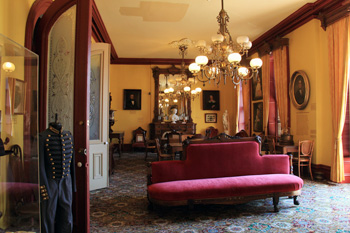
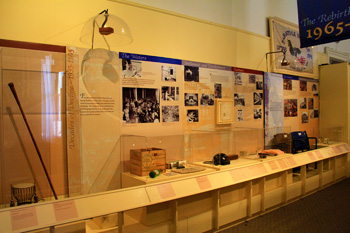 Built in 1870 by John Morrissey, a famed boxer and member of the notorious Tammany Hall crew, the Casino was first known as the Saratoga Club House and there were three rules strictly adhered to while it was in business. No ladies, only cash transactions and no locals allowed.
Built in 1870 by John Morrissey, a famed boxer and member of the notorious Tammany Hall crew, the Casino was first known as the Saratoga Club House and there were three rules strictly adhered to while it was in business. No ladies, only cash transactions and no locals allowed.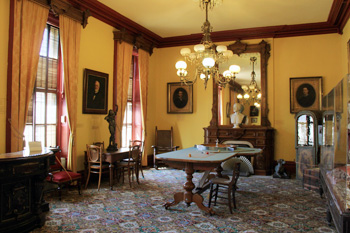 John Morrissey passed away in 1878 and the Club House fell into a state of decline until 1893. when Mr. Richard Canfield purchased it. Although he’d decided to keep the name of the Club House intact, it was the public that dubbed it ‘Canfield Casino’ and it stuck. Nearly $1 million was devoted to renovations, with a stunning grand ballroom added. This room had vaulted ceilings, colorful Tiffany stained-glass windows and over-the-top chandeliers, which added to the air of splendor Canfield was aiming for.
John Morrissey passed away in 1878 and the Club House fell into a state of decline until 1893. when Mr. Richard Canfield purchased it. Although he’d decided to keep the name of the Club House intact, it was the public that dubbed it ‘Canfield Casino’ and it stuck. Nearly $1 million was devoted to renovations, with a stunning grand ballroom added. This room had vaulted ceilings, colorful Tiffany stained-glass windows and over-the-top chandeliers, which added to the air of splendor Canfield was aiming for. Downstairs, gamblers could begin with $1 dollar bets. Upstairs, the stakes were much higher, oftentimes as high as $100,000. Only the most elite, arriving from all over the country, walked up the long staircase to play there.
Downstairs, gamblers could begin with $1 dollar bets. Upstairs, the stakes were much higher, oftentimes as high as $100,000. Only the most elite, arriving from all over the country, walked up the long staircase to play there.
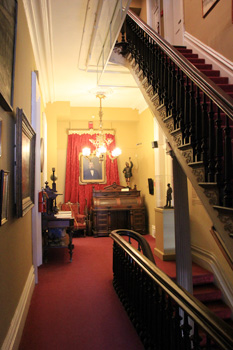 High stakes gaming tables stand among heavy sculptures and dark wood fireplaces. Long, heavy brocade drapes hang from windows that let natural light seep in, lending an air of mystery to the parlor.
High stakes gaming tables stand among heavy sculptures and dark wood fireplaces. Long, heavy brocade drapes hang from windows that let natural light seep in, lending an air of mystery to the parlor.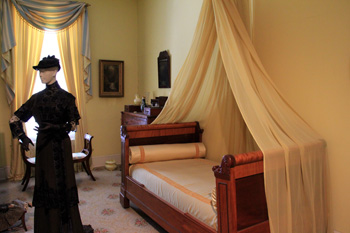 Even the well known SyFy channel had their ‘Ghost Hunter’ cast visit the museum. Ghostly voices and paranormal activities were made known during the time that the crew was there.
Even the well known SyFy channel had their ‘Ghost Hunter’ cast visit the museum. Ghostly voices and paranormal activities were made known during the time that the crew was there.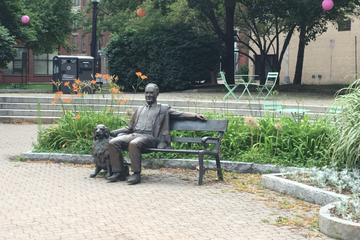

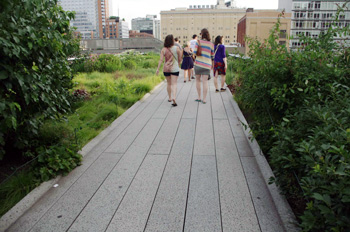
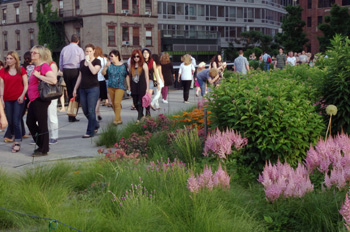 The High Line was set to be demolished around 1999 when a couple of New Yorkers started a movement to not only save the structure, but make it an extraordinary space for park goers to enjoy. The High Line is perfect for an early evening stroll when the Big Apple starts to cool down on a hot summer’s day. It’s free and although uncomfortably crowded in spots, you can’t beat enjoying the ever-changing streetscapes and unexpected scenery at your feet.
The High Line was set to be demolished around 1999 when a couple of New Yorkers started a movement to not only save the structure, but make it an extraordinary space for park goers to enjoy. The High Line is perfect for an early evening stroll when the Big Apple starts to cool down on a hot summer’s day. It’s free and although uncomfortably crowded in spots, you can’t beat enjoying the ever-changing streetscapes and unexpected scenery at your feet.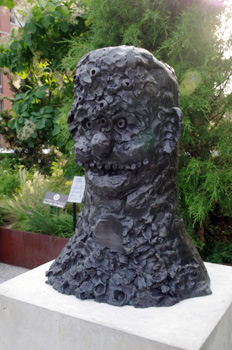 My travelling companions and I started the High Line near its northern terminus on West 30th Street between 10th and 11th avenues. Signage was not great and we got on the High Line by climbing a metal staircase only to find that there was an elevator nearby.
My travelling companions and I started the High Line near its northern terminus on West 30th Street between 10th and 11th avenues. Signage was not great and we got on the High Line by climbing a metal staircase only to find that there was an elevator nearby.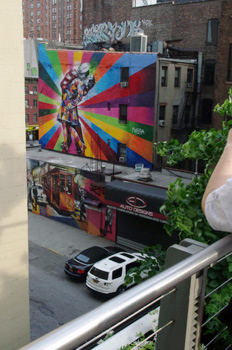 The walking path itself narrows to several people wide and expands to triple that in places with seating when it is most unexpected and appreciated. This includes a place called the 10th Avenue Square, complete with bleachers and huge picture windows for a broad view of the street life.
The walking path itself narrows to several people wide and expands to triple that in places with seating when it is most unexpected and appreciated. This includes a place called the 10th Avenue Square, complete with bleachers and huge picture windows for a broad view of the street life.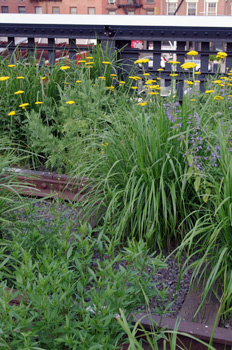 Sections of rusted track can be spotted throughout the High Line, but they are not always easy to find. This caused our group of park goers to each try to be the first to find a piece of old rail line at every change in garden space. The searches bordered on the obsessive by the end of our walk. Sometimes the old rails were far from the walking path and shaded by lush plants, growing among the rail ties like weeds did in the 1980s.
Sections of rusted track can be spotted throughout the High Line, but they are not always easy to find. This caused our group of park goers to each try to be the first to find a piece of old rail line at every change in garden space. The searches bordered on the obsessive by the end of our walk. Sometimes the old rails were far from the walking path and shaded by lush plants, growing among the rail ties like weeds did in the 1980s.
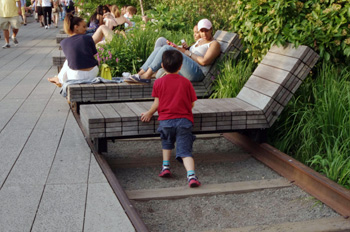 The High Line’s scale is more manageable than upper Manhattan’s huge Central Park. The two share a quirky characteristic in how the old concrete jungles appear to butt up against the green space of the parks for abrupt visual contrasts.
The High Line’s scale is more manageable than upper Manhattan’s huge Central Park. The two share a quirky characteristic in how the old concrete jungles appear to butt up against the green space of the parks for abrupt visual contrasts.